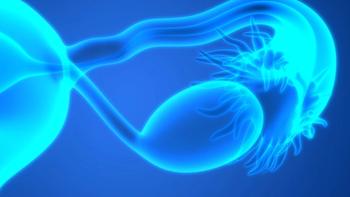
Oncology NEWS International
- Oncology NEWS International Vol 9 No 9
- Volume 9
- Issue 9
Alteplase Clears Occluded Central Venous Access Devices
NEW ORLEANS-Alteplase (Activase), a tissue plasminogen activator (tPA) produced by recombinant DNA, appears to be a safe, feasible, and economically attractive alternative to urokinase (Abbokinase) for clearing occluded central venous access devices (CVADs), a study among cancer patients shows.
NEW ORLEANSAlteplase (Activase), a tissue plasminogen activator (tPA) produced by recombinant DNA, appears to be a safe, feasible, and economically attractive alternative to urokinase (Abbokinase) for clearing occluded central venous access devices (CVADs), a study among cancer patients shows.
CVAD occlusion occurs in up to 25% of all catheters placed, and prevents infusion and/or withdrawal of materials, John Patrick Timoney, PharmD, Memorial Sloan-Kettering Cancer Center, said at the 36th Annual Meeting of the American Society of Clinical Oncology (ASCO).
Occlusions can be caused by fibrin sheath formation, thrombosis, poor positioning, or mechanical malfunction. The consequence can be need for surgical removal, treatment delays, and loss of treatment optionswith concomitant increased risk of morbidity, Dr. Timoney said. Reports have estimated that 64% of CVAD occlusions are thrombotic.
Urokinase is currently the only thrombolytic agent FDA approved for clearance of occluded catheters. In December 1998 and in January 1999, however, the FDA issued warnings regarding possible viral contamination of urokinase.
Stimulated by those warnings, the Memorial Pharmacy and Therapeutics Committee began to search for an alternative. This led to research showing that cryopreserved and subsequently thawed dilutions of alteplase were effective in ophthalmic applications. Streptokinase was ruled out as an alternative, Dr. Timoney noted, because of its potential for causing allergic reactions.
Dr. Timoney said that in one previously published small series, alteplase successfully cleared catheters with radiologically demonstrated thrombus where urokinase had failed, without adverse events. In a larger randomized study, clots were resolved, with a single dose, in 18% of 22 patients receiving urokinase and in 46% of 28 patients receiving alteplase.
There were concerns, Dr. Timoney said, over cost, vial size, and stability. The agent is supplied (by Genentech) in 50 mg vials with only 8-hour stability after reconstitution. That would have a significant financial impact on an institution if you could not use the entire vial, Dr. Timoney commented.
Frozen Alteplase Tested
Taking their cue from a report by Jaffe and coworkers of clinical activity for up to a year for frozen alteplase, Dr. Timoney and his colleagues froze 2.5 mL aliquots of alteplase in 5 mL vials at 20°C after aseptically reconstituting it from the 50 mg vials with 50 mL of sterile water. An expiration date of 30 days was determined based on published ophthalmologic effectiveness reports. The 5 mL vials were thawed as needed.
With the aim of evaluating safety and efficacy, data were prospectively monitored on 165 attempted clearances in 121 cancer patients over a 4-month period. The alteplase dose was 1 mg/mL in a volume sufficient to fill the catheter, which translated into a dose of 2 mg for a standard 2 mL catheter.
Analysis showed that out of 165 attempts at catheter clearance, 133 were successful for an 80% success rate. The mean dwell time was 45 minutes (range, 1 to 250). There were no treatment-associated adverse events.
A cost analysis showed also that using all of the agent from the 50 mg vials makes alteplase about $30 cheaper per dose than urokinase.
We feel confident, Dr. Timoney concluded, that cryopreservation does not alter the effectiveness of alteplase and makes it an economically feasible alternative to urokinase for safe and effective clearance of occluded CVADs.
Articles in this issue
over 25 years ago
Soy’s Effect on Breast Cancer Remains Uncertainover 25 years ago
STAR Enrollment Tops 6,000 in First Year of Recruitmentover 25 years ago
New rhTPO Being Tested in Three Trialsover 25 years ago
New Research Centers Target How Market Forces Affect Health Careover 25 years ago
PRIMATOM System Combines CT Scanning With Radiation TherapyNewsletter
Stay up to date on recent advances in the multidisciplinary approach to cancer.
















































































